Art connectors, adhesives, and accumulations as a prism of the soul in traumatic times.
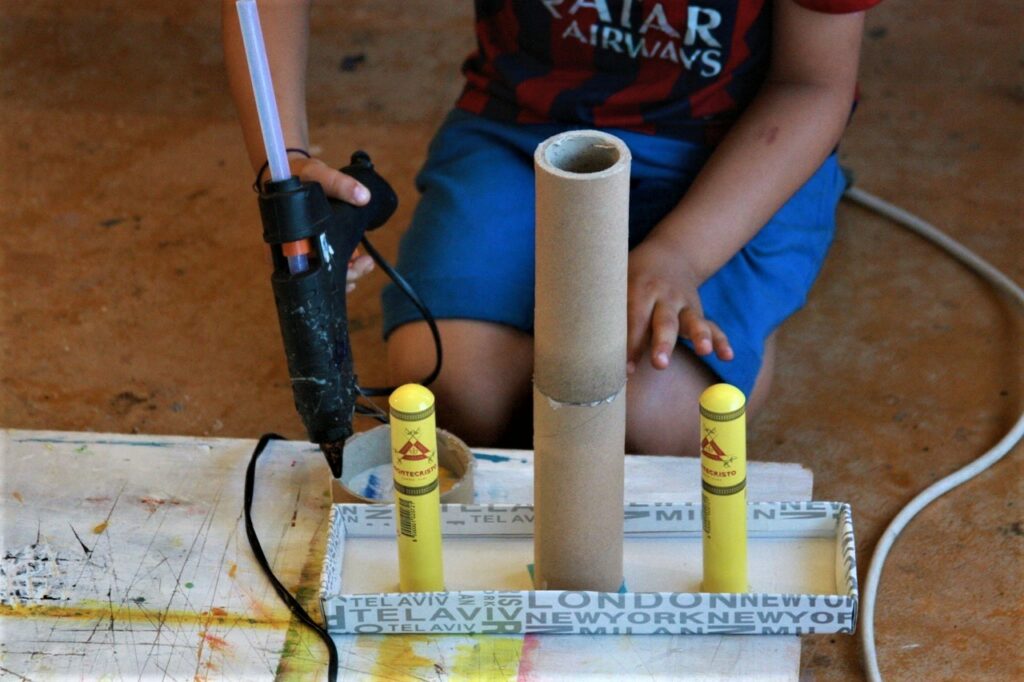
During COVID-19, we witnessed a global phenomenon that stemmed from uncertainty and anxiety. It seemed like an almost reflexive need worldwide to impose order in the home environment: organize the wardrobe, sort books and give up a few, organize the pantry, and consolidate the lentils into appropriate jars according to colors. Many of us knitted, embroidered, painted walls, and planted gardens.
Sorting, classifying, and connecting objects to sequences and clusters may also express a mental response to anxiety by feeling in control of at least a small and possible reality. Repetitive and joint activities such as knitting a scarf, folding and sorting clothes by color, sifting through a pile of documents, and planting a spice bed calm us down and are very satisfying.
The creator’s actions depict times: past, present, and future – and therefore, this act also contains optimism, meaning, and hope for better times. It’s an optimistic spiral that builds over time.
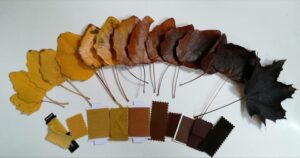
Remida, Reggio Emilia: classifying leaves and textiles according to color.
And now, during the 2023-2024 war with Hamas in Gaza, when anxiety, uncertainty, and terror are immense, art therapists report that they are noticing an increased preoccupation with creating new orders by gluing, connecting, and combining materials in quantities and ways never seen before. They notice the creation of tiny worlds in cardboard boxes, collages pasting, art diaries, and gluing mosaics. Maskintapes and adhesives are widely used, and hot glue works a lot. Objects were also pinned by pressing into chunks of plasticine.
Various textile works can also be perceived in this context since they express a similar process and urge to accumulate small actions and parts into a large whole. So, it is no coincidence that embroidery and knitting have spontaneously become group gatherings and projects in many communities.
The accumulation of such different compositions was also noticed during the coronavirus period. Now, during the war, they express additional contexts.
Let’s look at the connecting tools in the studio these days:
What do they mean in the art therapist’s studio? What do they represent?
Joiners, Dividers, and Measuring Tools connect and separate objects in the studio. They bring objects closer together or separate them.
Nevertheless, they also describe the emotional-spiritual resonance of this family of tools. In my mind, this diverse collection of tools and instruments is one family characterized by relationships. This is because they all own a context and a common denominator for the relationship they create: they separate or merge, foster a connection between, or isolate things. By utilizing them, the working hands express an aspect of the relationship.
Nona Orbach, The Good Enough Studio, 2019
Each divider or connector ownes has its internal language and carries symbolic, cultural, psychic, and biographical meanings. Therefore, the particular action performed in each material or tool often expresses emotional systems and different qualities of affinity between a person and his fellow man. Each author invites typical actions, such as tape sticks to paper. Its removal involves pulling and plucking, leaving the meeting area rough, thin, and wounded. Staple clamps vigorously the papers. It pierces them with two holes, moves on to the next paper, and closes forcibly on a group of papers as a bundled package with an iron pin.
Gluing or creating holes as meeting points differ in strengths and qualities of affinity between the two. Duct tape asks to stick. It’s a gentler connection than a metal stapler that forces one of the papers to connect with the force of an iron pin. Moreover, the paper will remain rougher and thinner if we undo the connections. The holes will widen as the pins are removed, and the papers will wrinkle from the very act of separation. The blemish will be much more violent.
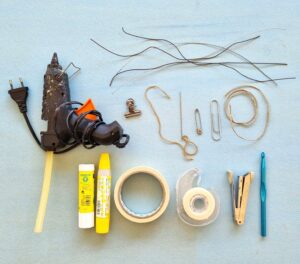
An art therapist prepared various connectors for a group table: needle and thread, safety pin, iron wire, linen thread, tapes, liquid glue, stapler, clip, and a knitting needle. The participants were asked to choose one connector, wander around the studio, and choose something to connect to it, creating something with both.
Let‘s see what happened to people with similar objects.
Two participants chose connectors with a longitudinal element: one chose a rusty iron wire, and the other a linen thread. They both chose a creamy sheet of paper.
The one who chose the linen thread rolled the paper into a scroll surrounded by the soft thread and tied it in a double knot.
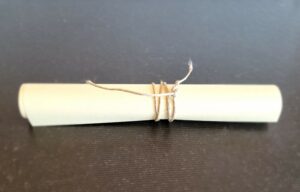
The second one, who chose the iron wire, created folds in the paper and pierced it with the end of the stiff, rusty wire. The paper wrinkled mostly around the holes. She threaded the metal wire through the holes and created a structure. That is, the strength of the iron wire forced the paper to “stand up.”
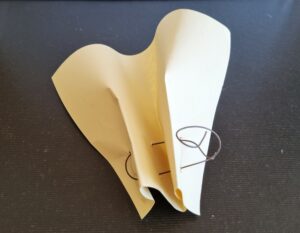
What is the difference between the two artworks?
The first is winding, hugging, and adjusting the inner circular movement natural to both. The joint movement of the two materials echoes each other in space.
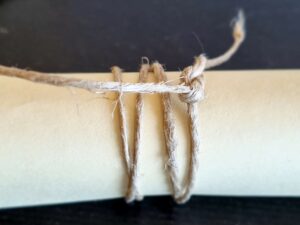
On the other hand, the affinity between the metal wire that created a hole in the paper communicates the sensation of inserting and bending force onto the paper for it to respond to some shape. The strength of the hard iron wire expresses a forceful dialogue.
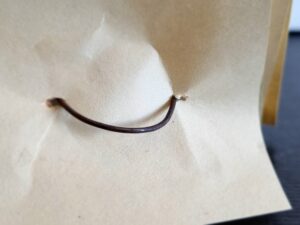
What can we understand from this?
Each connector expresses relationship qualities between objects specific to its internal language. It reveals a specific quality of dialogue.
The creator’s choices often also reflect something of the emotional qualities. The body speaks the mind.
Therefore, when we wander around the studio, intuitively without conceptualizing, we usually choose what is most suitable for that moment to express the soul. The choices are often poetically accurate. We will select a tool and material that will assist us in expressing our process through its qualities.
The body’s actions and materials manifest in accurate choreography and are coordinated and integrated into the soul’s needs. They can also reflect expressions of emotion and thought, ancient relationships, biography, and archetypal metaphors as we experience them beneath words. The relationship of proximity and affinity is intertwined.
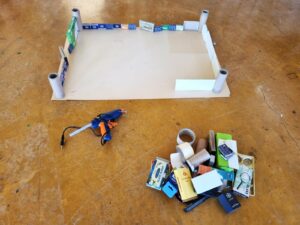
An eight-year-old [second war week] needed hot glue: I am building a wall around a town.
More about art in war time here:
This strikes a very personal chord in that cutting , gluing and weaving have recently taken up a large part of my mind and focus. There is something very therapeutic about making a whole out of separate pieces…..even in the midst of disorder.